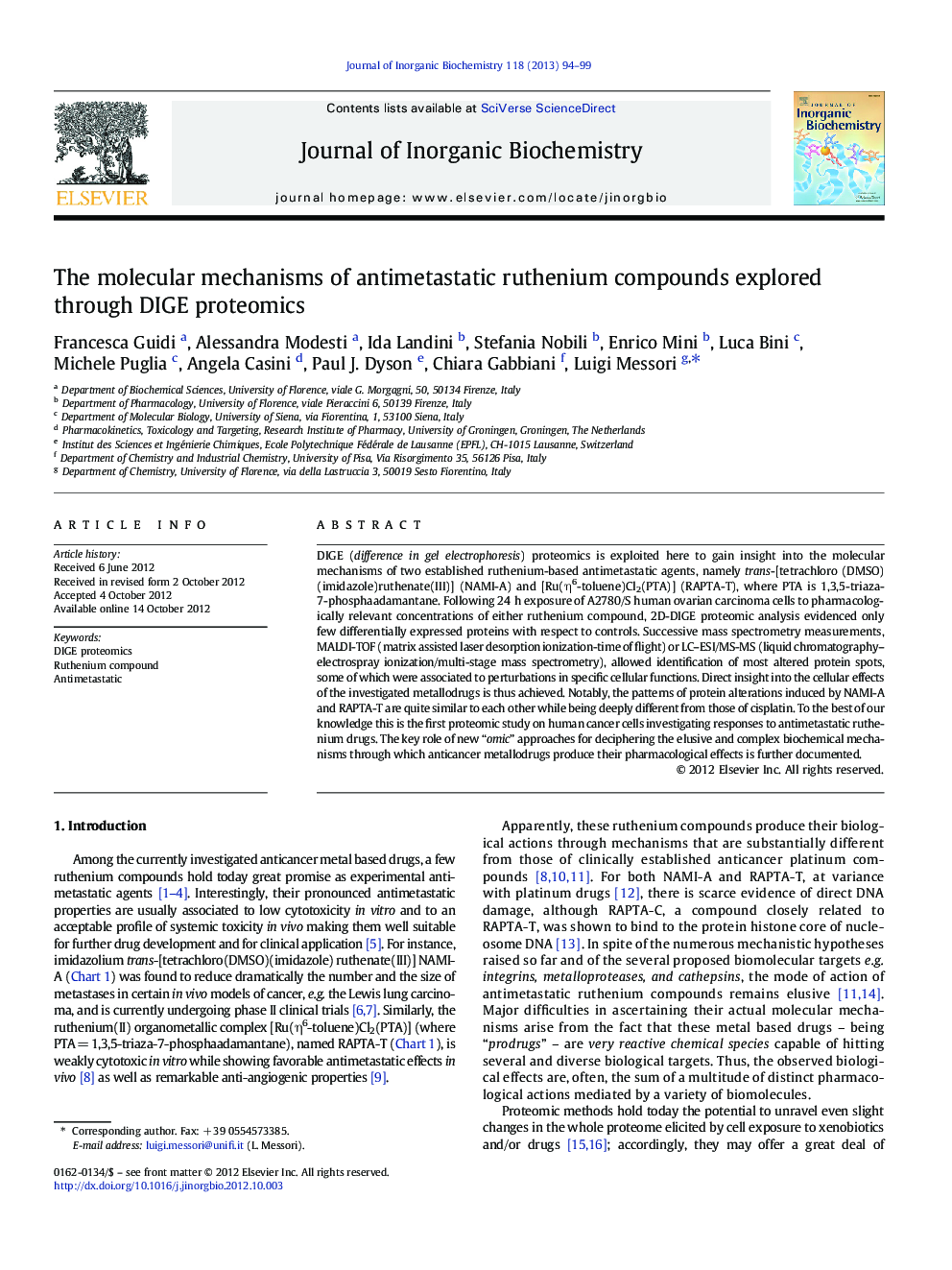| کد مقاله | کد نشریه | سال انتشار | مقاله انگلیسی | نسخه تمام متن |
|---|---|---|---|---|
| 1315908 | 1499469 | 2013 | 6 صفحه PDF | دانلود رایگان |

DIGE (difference in gel electrophoresis) proteomics is exploited here to gain insight into the molecular mechanisms of two established ruthenium-based antimetastatic agents, namely trans-[tetrachloro (DMSO) (imidazole)ruthenate(III)] (NAMI-A) and [Ru(η6-toluene)Cl2(PTA)] (RAPTA-T), where PTA is 1,3,5-triaza-7-phosphaadamantane. Following 24 h exposure of A2780/S human ovarian carcinoma cells to pharmacologically relevant concentrations of either ruthenium compound, 2D-DIGE proteomic analysis evidenced only few differentially expressed proteins with respect to controls. Successive mass spectrometry measurements, MALDI-TOF (matrix assisted laser desorption ionization-time of flight) or LC–ESI/MS-MS (liquid chromatography–electrospray ionization/multi-stage mass spectrometry), allowed identification of most altered protein spots, some of which were associated to perturbations in specific cellular functions. Direct insight into the cellular effects of the investigated metallodrugs is thus achieved. Notably, the patterns of protein alterations induced by NAMI-A and RAPTA-T are quite similar to each other while being deeply different from those of cisplatin. To the best of our knowledge this is the first proteomic study on human cancer cells investigating responses to antimetastatic ruthenium drugs. The key role of new “omic” approaches for deciphering the elusive and complex biochemical mechanisms through which anticancer metallodrugs produce their pharmacological effects is further documented.
2D-DIGE (difference in gel electrophoresis), an advanced and sensitive proteomic method, is exploited here, for the first time, to gain insight into the molecular mechanisms of two established ruthenium-based antimetastatic agents, NAMI-A and RAPTA-T, in A2780/S cancer cells.Figure optionsDownload as PowerPoint slideHighlights
► 2D-DIGE (difference in gel electrophoresis) is used to investigate the mode of action of two antimetastatic ruthenium compounds.
► Both compounds cause proteomic alterations different from those caused by cisplatin.
► A number of altered proteins in common between the two treatments suggest a strict correlation in the mechanisms of the investigated ruthenium compounds.
Journal: Journal of Inorganic Biochemistry - Volume 118, January 2013, Pages 94–99